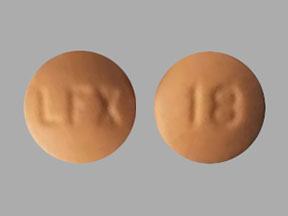
Lofexidine Coupons & Savings Card – Discount Prices from $167.09
Generic for: Lucemyra
My prescription
Edit
0.18MG, Lofexidine (36 Tablets)
Select pharmacy

CVS
$217.84
COUPON PRICE
Albertsons
$167.09
COUPON PRICE
Walgreens
$169.25
COUPON PRICE
Walmart
$570.84
COUPON PRICELofexidine savings card
Show this card to your pharmacist
Albertsons
$167.09
BIN
ID
PCN
GRP
015995
LHEV857216
GDC
GDRX
Powered by
More prescriptions for opioid dependence
More prescriptions for opioid dependence
Price history for Lucemyra (brand) & Lofexidine (generic)
36 Tablets, 0.18MG
Average retail price for Lucemyra
Average retail price for Lofexidine
Average SaveHealth price for Lofexidine
Our price history data is based on aggregated prescription data collected from participating pharmacies in America. Our prescription data updates daily to reflect the latest price changes. If you notice a missing data point, it means there wasn't sufficient data available to generate a monetary value for that date.
We analyzed Lofexidine prices for (0.18MG, 36 Tablets) over the last 12 months. The average retail price was $958.70, while the average price using the SaveHealth discount card was $274.18. That's a savings of approximately 71.40% when using our Lofexidine coupon.
Compared to the generic version, Lucemyra had an average price of $1039.48 over the same time period. With the SaveHealth savings card, Lofexidine is 73.62% cheaper on average than Lucemyra.
*Retail prices are based on pharmacy claims data, and may not be accurate when we don't have enough claims.
Lofexidine dosage forms
Dosage Quantity Price from Per unit 0.18MG 36 Tablets $217.84 $6.05 0.18MG 96 Tablets $550.90 $5.74
| Dosage | Quantity | Price from | Per unit |
|---|---|---|---|
| 0.18MG | 36 Tablets | $217.84 | $6.05 |
| 0.18MG | 96 Tablets | $550.90 | $5.74 |
Lofexidine Warnings
This medication, Lucemyra (lofexidine), has several important safety warnings that should be reviewed carefully. Consult your healthcare provider for any concerns or questions regarding these risks.
Low Blood Pressure and Heart Rate Risks: Lucemyra can cause a decrease in blood pressure and heart rate, which may result in fainting. Inform your healthcare provider about your medical history and all medications you are currently taking to assess the safety of using Lucemyra. Special attention should be paid to those with dehydration, overheating, a history of heart problems, recent heart attacks, strokes, kidney failure, or those taking medications that lower blood pressure or heart rate.
Risk of Life-Threatening Heart Rhythms: The medication may lead to QT prolongation, a condition that affects the heart's rhythm and can be life-threatening. Individuals with heart failure, slow heart rhythms, kidney or liver issues, low magnesium or potassium levels, or those taking medications like methadone that can cause abnormal heart rhythms should exercise caution.
Excessive Sleepiness: Lucemyra can cause significant drowsiness and impair cognitive functions. This effect is amplified by alcohol or medications that induce drowsiness or slow bodily functions, such as benzodiazepines. Avoid driving or operating machinery until you understand how the medication affects you. If you experience symptoms like slurred speech, lightheadedness, confusion, or excessive drowsiness, seek medical help immediately.
Increased Opioid Overdose Risk: This medication is intended only for managing opioid withdrawal symptoms and is not approved for treating opioid addiction. Use caution if you have an opioid use disorder.
Withdrawal Side Effects: Abrupt discontinuation of Lucemyra can result in increased blood pressure and other withdrawal symptoms such as insomnia, anxiety, chills, sweating, and limb pain. Consult with your healthcare provider before stopping the medication; they can guide you in tapering off the dose gradually to minimize withdrawal effects.
These warnings are crucial for ensuring safe and effective use of Lucemyra. Always communicate openly with your healthcare provider about any concerns or unusual symptoms.
Lofexidine Side Effects
Common side effects:
- Excessive sleepiness
- Dizziness
- Lightheadedness when standing up
- Trouble sleeping
- Dry mouth
- Slow heart rate
- Low blood pressure
Less common but important to monitor:
- Ringing in the ears
- Feeling faint
Serious side effects:
- Abnormal heart rhythms
- Chest pounding
- Irregular heartbeat
- Chest pain
- Shortness of breath
- Trouble breathing
- Shallow breathing
- Extreme sleepiness
- Blue skin
- Severe allergic reaction
- Rash
- Itching or swelling of the face, tongue, or throat
- Severe dizziness
